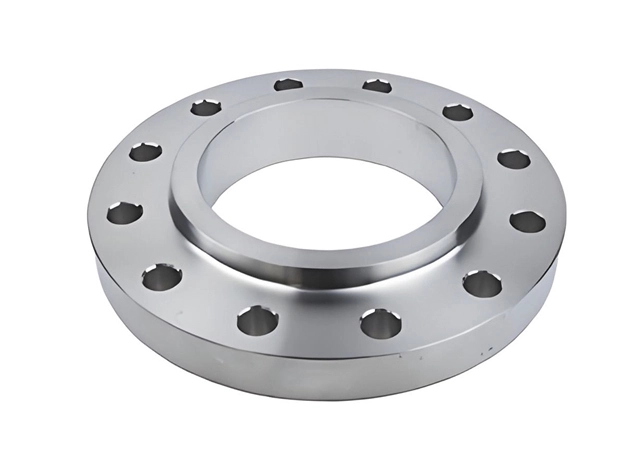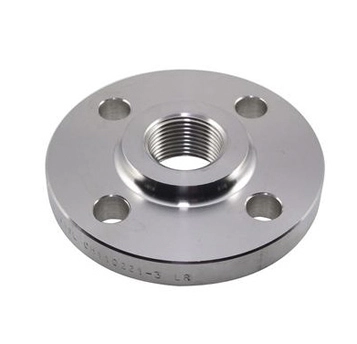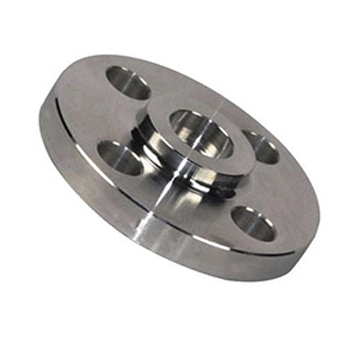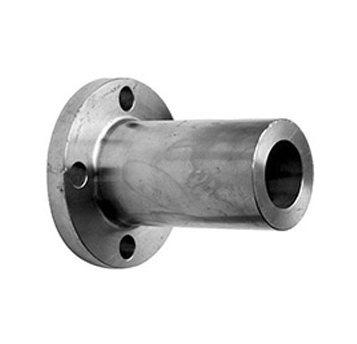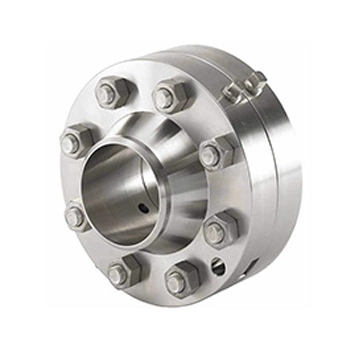What is Slip On Flange
A slip - on flange is a type of pipe flange that is designed to slide over the end of a pipe. It has an inner diameter slightly larger than the outer diameter of the pipe, allowing for a snug fit. The flange is then welded to the pipe on both the inside and outside of the pipe end.
The main function of a slip - on flange is to provide a connection point in a piping system. It enables the easy joining of pipes, valves, fittings, and other components. This connection is crucial for the seamless flow of fluids or gases within the system. For example, in a water supply network, slip - on flanges are used to connect long stretches of pipes, ensuring a continuous water flow.
Another important function is to provide a means of disassembly. When maintenance or repair work is required on a particular section of the pipeline, the bolts holding the flanges together can be removed, allowing the section to be isolated and worked on.
Slip - on flanges are also beneficial in situations where some degree of misalignment between pipes may occur during installation. The ability to slide the flange over the pipe and make minor adjustments before welding can help accommodate such misalignments, reducing installation time and ensuring a proper seal. Additionally, they can be used in a variety of applications, from low - pressure systems like residential plumbing to high - pressure industrial pipelines, making them a versatile choice in the world of piping connections.
Types of Slip On Flange
Standard Slip-On Flange
The most common type, used in general piping systems.
Features a flat face (FF) or raised face (RF) sealing surface.
Raised Face Slip-On Flange (RF SO Flange)
Has a raised surface around the bore (inner diameter) to provide a sealing surface for gaskets.
Flat Face Slip-On Flange (FF SO Flange)
Features a flat sealing surface across the entire face of the flange.
Ring-Type Joint Slip-On Flange (RTJ SO Flange)
Designed for high-pressure and high-temperature applications.
Threaded Slip-On Flange
Combines the slip-on design with internal threading to allow connection to threaded pipes.
Reducing Slip-On Flange
Used to connect pipes of different diameters.
The most common type, used in general piping systems.
Features a flat face (FF) or raised face (RF) sealing surface.
Raised Face Slip-On Flange (RF SO Flange)
Has a raised surface around the bore (inner diameter) to provide a sealing surface for gaskets.
Flat Face Slip-On Flange (FF SO Flange)
Features a flat sealing surface across the entire face of the flange.
Ring-Type Joint Slip-On Flange (RTJ SO Flange)
Designed for high-pressure and high-temperature applications.
Threaded Slip-On Flange
Combines the slip-on design with internal threading to allow connection to threaded pipes.
Reducing Slip-On Flange
Used to connect pipes of different diameters.
Sizes and Pressure Ratings of Slip On Flange
Common Sizes:
Nominal Pipe Size (NPS): 1/2" to 24" (standard range)
Large Sizes: Up to 60" or more (for specialized applications)
Metric Sizes: DN15 to DN600 (or larger)
Common Pressure Classes:
ASME/ANSI Pressure Classes:
150# (PN20): Low-pressure applications.
300# (PN50): Medium-pressure applications.
400# (PN64): Intermediate pressure.
600# (PN100): High-pressure applications.
900# (PN150): Very high-pressure applications.
1500# (PN250): Extreme pressure applications.
2500# (PN420): Ultra-high-pressure applications.
PN Ratings (European Standards):
PN6, PN10, PN16, PN25, PN40, PN63, PN100, PN160, PN250, PN320, PN400.
Standards of Slip On Flange
ASME Standards (USA)
ASME B16.5: Covers flanges for NPS 1/2" to 24", including various types and pressure classes up to 2500#.
ASME B16.47: For large-diameter flanges (NPS 26" to 60"), with two series and pressure classes up to 900#.
ASME B16.36: Focuses on orifice flanges for flow measurement applications.
ANSI Standards (USA)
ANSI B16.5 and B16.47 are identical to ASME B16.5 and B16.47, covering similar flanges and specifications.
DIN Standards (Germany)
DIN EN 1092-1: European standard for circular steel flanges, covering various types and pressure ratings up to PN400.
DIN 2527: Specific to slip-on flanges with raised faces.
EN Standards (Europe)
EN 1092-1: Equivalent to DIN EN 1092-1, covering steel flanges.
EN 1759-1: Covers flanges for industrial applications, similar to ASME B16.5.
JIS Standards (Japan)
JIS B2220: Covers steel pipe flanges with pressure ratings from 5K to 63K.
GOST Standards (Russia)
GOST 12820-80: Covers slip-on flanges for PN ratings.
GOST 12821-80: Covers weld neck flanges, often referenced with slip-on flanges.
Material Grade of Slip On Flange
Carbon Steel Flanges: Common grades like ASTM A105 and A350 LF2 are used for high-temperature, high-pressure systems in oil, gas, and general-purpose applications.
Stainless Steel Flanges: Grades such as ASTM A182 F304 and F316 offer excellent corrosion resistance for food, pharmaceuticals, and corrosive environments.
Alloy Steel Flanges: ASTM A182 F11 and F22 are ideal for high-temperature, high-pressure systems in refineries and power plants.
Duplex Steel Flanges: Grades like ASTM A182 F51 (Duplex 2205) provide high strength and corrosion resistance for harsh environments and offshore applications.
Nickel Alloy Flanges: Materials like Monel, Inconel, and Hastelloy are used in extreme conditions, such as chemical processing and offshore industries.
Applications of Slip On Flange
Industrial Piping
Slip - on flanges are used in industrial plants for connecting pipes. They're suitable for various fluids, offering easy installation in chemical, petrochemical pipelines.
Power Generation
Applied in power plants' steam and water pipelines. They can withstand high - pressure and temperature, ensuring reliable connections in thermal, nuclear plants.
Water and Wastewater Systems
Used in water supply and sewage treatment. They connect pipes easily, and some materials resist corrosion from water and chemicals in these systems.
HVAC Systems
Employed in heating, ventilation, and air - conditioning. Their simple installation and ability to handle air and refrigerant flow make them ideal for HVAC piping.
Marine Industry
Found in ships' piping like fuel, cooling lines. They can endure the ship's movement and are resistant to seawater corrosion for long - term use.

 EN
EN
